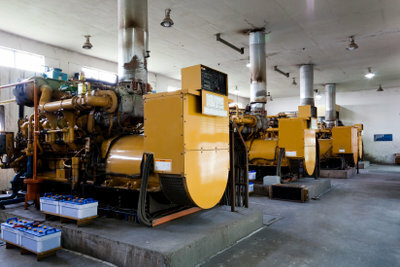How does a generator work in physics?
Electric power, especially alternating current, is generated in the electricity works with a generator. How this works is explained here - physically simplified.

What you need:
- actually just time
- and interest
Power generation - the physical basics
In a battery becomes electrical energy generated by chemical reactions, but this is direct current, which can be used to supply devices with a comparatively low power requirement. However, the refrigerator or electric stove requires alternating current.
- Alternating current is generated in power plants, whereby kinetic energy (regardless of whether it is water or hot steam) is converted into electrical energy.
- This conversion is done by a generator. Incidentally, the word comes from the Latin for "generare" to produce.
- The basis of every generator is magnetic force and kinetic energy.
- Every magnet is surrounded by a (invisible) force field. Electric conductors through which a current flows also develop such a magnetic field around themselves (and can then influence smaller magnets).
- As soon as such a magnet is moved in a wire spool, the pointer of a connected measuring device deflects - an electrical voltage is generated (briefly).
- In the physics This process is called induction: If a magnetic field changes, a force is exerted on the charges in the wire, the electrons, which they follow. A voltage arises because the electrons are no longer evenly distributed in the wire.
- At the ends of the coil, the two electrical poles are formed like a battery.
- If the direction of movement is reversed, the direction of force changes and with it the polarity of the coil.
- Continuous polarity reversal creates an alternating voltage.
- You are certainly familiar with a practical application of this principle: Your bicycle dynamo works according to it. The turning motion of the small upper wheel turns a permanent magnet surrounded by a coil. Power to illuminate the bicycle can be drawn from both ends of the coil.
Magnet in the generator - its function simply explained
What does a magnet do in a generator and how do you generate electricity with it? The …
Generator - this is how it works
- It is not far from the bicycle dynamo to the (of course much larger) generator: It also works according to the induction principle of physics.
- The main difference lies in the type of magnet used: a powerful electromagnet rotates in the generator. This is also known as a rotor or runner.
- Of course, direct current is required for this rotating electromagnet, as this is the only way to generate a magnetic field with constant polarity.
- This direct current is supplied by the so-called Exciter that is mechanically driven by the same shaft as the rotor.
- The coils are attached around the electromagnet. Since these do not move, this part of the generator is also known as the stator.
- In general, several large coil packs (usually three for three-phase current) are internally connected to one another by a ring line, after all, you want to generate strong currents.
- At the other end, a wire leads directly to the outside.
How helpful do you find this article?

